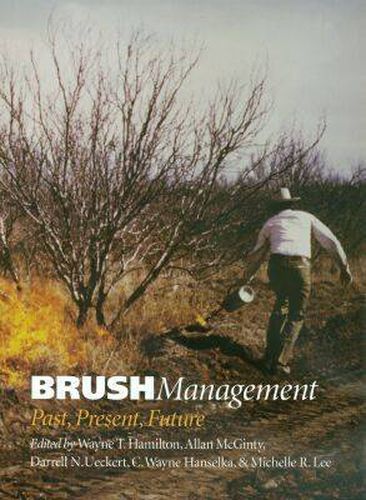Readings Newsletter
Become a Readings Member to make your shopping experience even easier.
Sign in or sign up for free!
You’re not far away from qualifying for FREE standard shipping within Australia
You’ve qualified for FREE standard shipping within Australia
The cart is loading…






The presence of brush in rangeland environments is a high-priority issue among landowners, and not just in Texas. Whether they manage their land for livestock, hunting, or wildlife watching, what to do about unwanted woody plants remains a serious and pervasive question for them. In the pages of this book, leading range management professionals introduce and explain not only the mechanisms of managing brush but also the changes in management philosophy and technology that have taken place over time. From the futile attempts at eradication to the successes of integrated brush management, practitioners examine mechanical, biological, chemical, and fire-related methods from three perspectives - the past, the present or
state-of-the-art,
and the future. In a final discussion, three specialists address the timely and important subject of brush management as it relates to water yield, economics, and wildlife. Available statistics generally show an increase in the major problem species, such as juniper and honey mesquite, on Texas rangelands. But those who plan brush management in a systematic way, apply the correct treatment, and follow up properly can
beat the odds
and gain both technically and economically successful results.
$9.00 standard shipping within Australia
FREE standard shipping within Australia for orders over $100.00
Express & International shipping calculated at checkout
The presence of brush in rangeland environments is a high-priority issue among landowners, and not just in Texas. Whether they manage their land for livestock, hunting, or wildlife watching, what to do about unwanted woody plants remains a serious and pervasive question for them. In the pages of this book, leading range management professionals introduce and explain not only the mechanisms of managing brush but also the changes in management philosophy and technology that have taken place over time. From the futile attempts at eradication to the successes of integrated brush management, practitioners examine mechanical, biological, chemical, and fire-related methods from three perspectives - the past, the present or
state-of-the-art,
and the future. In a final discussion, three specialists address the timely and important subject of brush management as it relates to water yield, economics, and wildlife. Available statistics generally show an increase in the major problem species, such as juniper and honey mesquite, on Texas rangelands. But those who plan brush management in a systematic way, apply the correct treatment, and follow up properly can
beat the odds
and gain both technically and economically successful results.